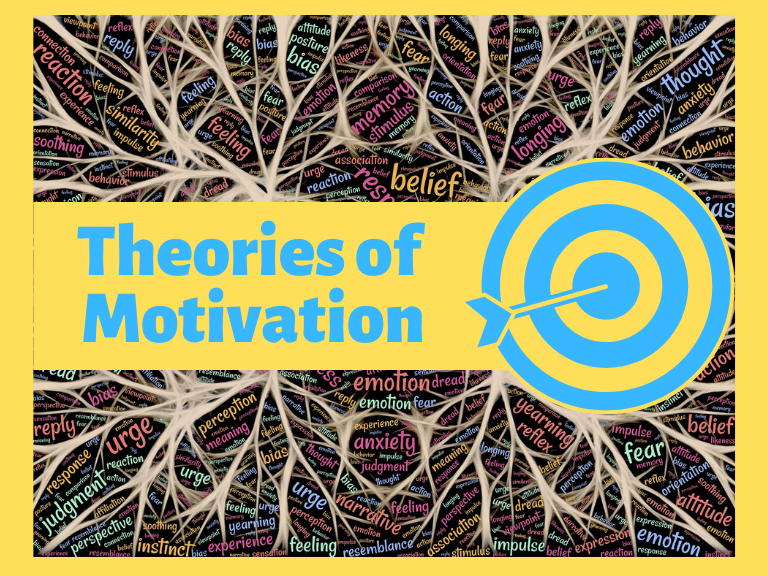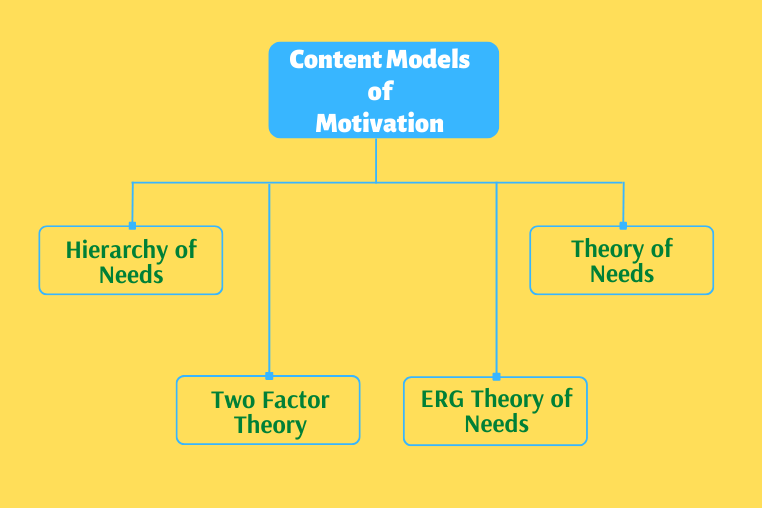
Among the many famous theories in psychology are the concepts that explore motivation in human beings. They explain what motivation is, how it works and what it does. To better understand how you can stimulate yourself and others around you, come explore what motivation means and what are some theories of motivation.
Table of Contents
What is Motivation in Psychology?
Motivation is a process that affects our goal-oriented behavior in the following ways:
Initiates – You can begin to do some work when you are motivated to do so.
Guides – Once you have started a particular task, your motivation will guide your next plan of action.
Maintains – Motivation for a particular goal will perpetuate your behavior to reach the desired destination.
Altogether, it is the motivation that helps us work towards and achieve our goals.
Theories of Motivation
While the human mind has been a subject matter of study for many years, research about motivation became prominent when the earliest theories were postulated in the mid-twentieth century. To reach a systematic classification, these theories of human motivation have been categorized as ‘content models’ and ‘process models’. While newer theories have also been put forth, it is often found that the foundations of these are based on the earlier premises.
Moving forward, let’s dive into the different models and theories of motivation.
Models of Motivation

Content Theories of Motivation
Content Models of Motivation came prior to the Process Models. The theories of motivation under this model answer “What motivates people?” They delve into a ‘system of needs’ that motivates humans. Some of the most eminent Content theories of motivation are:

1. Hierarchy of Needs, Abraham Maslow

Maslow has devised a pyramid of needs and believes that people begin from the base of this structure and climb us. This means that once the lower, basic needs of a person are fulfilled, only then he can be motivated to work towards the higher needs. His hierarchy, beginning from the bottom, is:
- Physiological: These needs are very basic and essential to human survival. It includes food, water, shelter, sex, etc.
- Safety and Security: The need for good health, physical and emotional security, insurance etc. make up this level.
- Social: At this stage, a person works towards a family, making friends and looks for belongingness in society.
- Esteem: The esteem needs prompt people to satisfy their ego i.e. gather attention, achieve status, get respect etc.
- Self-actualisation: A person at the summit of Maslow’s pyramid is motivated to realize his true potential.
You can dig deeper into Maslow’s Hierarchy of Needs and how it impacts human motivation.
2. Theory of Needs, David McClelland
McClelland proposed that there are three emotional needs which drive Motivation. Everyone has a fusion of these three motivators and usually, one of them is dominant.
- Need for Achievement– This is a need for high performance and accomplishments. It also involves the desire to put in your best efforts and be personally responsible.
- Need for Affiliation– The need to be liked and accepted by others means the ‘need for affiliation’. Such people tend to be agreeable and desire social approval.
- Need for Power– It means a need to have control over oneself and/or others. People with a high Need for Power want to acquire positions with authority and influence.
You can dig deeper into David McClelland’s Theory of Needs and how it impacts human motivation.
3. Two Factor Theory, Frederik Hertzberg
Hertzberg talks about two sets of mutually independent factors in a workplace. These factors are called Motivators or Satisfiers and Hygiene Factors or Dissatisfiers. As their names suggest, these factors cause job satisfaction or job dissatisfaction respectively.
Both these contrasting factors are measured on the same gamut. According to him, the ideal situation is where both these factors are high so that the employees are highly motivated to work and have no complaints. Read More
4. ERG Theory of Needs, Clayton Alderfer
Alderfer is said to have presented his own version of Maslow’s Hierarchy of Needs. However, instead of developing a rigid ladder, he believes that if people are not satisfied in their category of needs, they’ll put in more effort to enhance the lower needs. He proposed the following types of needs:
- Existence: Basic, essential needs for survival. Eg. food, water, shelter, clothing, sex etc.
- Relatedness: These needs pertain to the desire for belongingness, love and maintaining interpersonal relationships.
- Growth: Personal development is wished for in growth needs; it thus includes personal achievements, self-esteem, self-actualization etc.
Process Theories of Motivation
The Process Models enquire about the ‘hows’ of human motivation. They tend to describe the mechanism of human behavior that leads to a desired goal. These theories are newer in comparison to the Content Models. Here are some well-known Process theories:

1. Reinforcement Theory, B.F. Skinner
Reinforcement Theory by B.F. Skinner suggests that a desired level of motivation can be reached by the means of Reinforcements and Punishments.
Reinforcements are used to get to the desired behavior. These can be applied in two ways:
- Positive – Adding a positive action, for example, increased salary.
- Negative – Removing a negative action, for example, eliminating Saturday as a work day if requirements have been met
Punishments, on the other hand, are used to discourage behavior that is undesirable. These can also be put to use in two ways:
- Positive – Applying negative consequences to avoid undesired behavior.
- Negative – Removing a positive behavior or reward; for example, a child’s TV time is taken away if he behaves mischievously.
Skinner explains how we can implement reinforcement theory in our life.
2. Theory of Expectancy, Victor Vroom
Vroom has proposed that Motivation is a product of 3 factors. Let’s understand these:
- Expectancy– Perception that effort and performance are directly related; which means that more effort will lead to better performance.
- Instrumentality– Perception that good performance will yield appropriate outcomes.
- Valence– This is the intensity of importance placed on the outcomes or reward.
Thus, the reason that a person would gather to undertake behavior to reach the desired goal will be equal to E*I*V. Victor Vroom goes into great detail in explaining the Theory of Expectancy and how to apply it.
3. Goal Setting Theory, Edwin Locke
Indicated rightly by its name, the Goal-Setting Theory of Motivation establishes that goals give direction to people and ascertain their level of effort. The following five principles guide this process:
- Clarity – Clear and measurable goals reduce obscurity.
- Challenge – The challenge that the goal possesses determines the accomplishment.
- Commitment – Motivation depends on the level of participation and commitment that a person has to the goal-setting.
- Feedback – Locke has exclusively mentioned that goal-setting, with appropriate feedback will bring better performance.
- Task Complexity – Goals must be achievable and if the complexity is high, special measures must be taken.
The ‘Self-Efficiency’ of a person and his ‘Commitment’ towards the goal also play key roles in determining motivation. We have an entire article on Goal Setting Theory that helps you implement the theory
4. Equity Theory, John Adams
This theory of motivation states that people are motivated when they find a balance between the contribution that they put in for a task and their achievements out of it. This simply means that people seek to stabilize their ‘inputs’ and ‘outputs’.
Adams believes that understanding our own contribution and comparing it with others, both play a role in determining our motivation. Equity Theory of Motivation has several implications which we have covered in great detail.
Learn more about the human mind, discover yourself and remain motivated with Evolve!

Karishma Golchha is pursuing Bachelor’s in Psychology. She is very keen about the human mind and looks forward to connect with you at golchha2002@gmail.com and evolve together!
